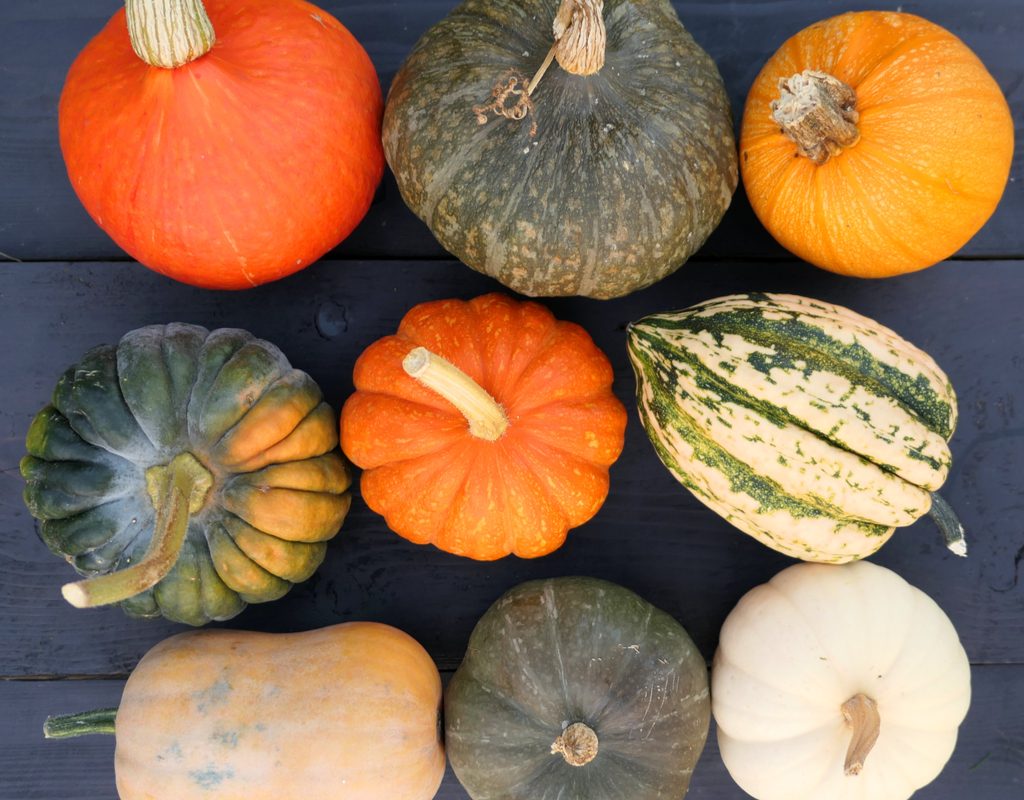
Pumpkins are a staple of fall gardens. From pumpkin pie to jack-o-lanterns, they’re an iconic part of many seasonal celebrations and traditions. However, their slow growth leaves them vulnerable to pests, diseases, and other such problems. So how do you keep your pumpkins safe from pests and disease while they take their sweet time growing? Well, try growing pumpkins vertically on a trellis! If you’ve never tried vertical gardening before or aren’t sure where to start, this is the guide for you.
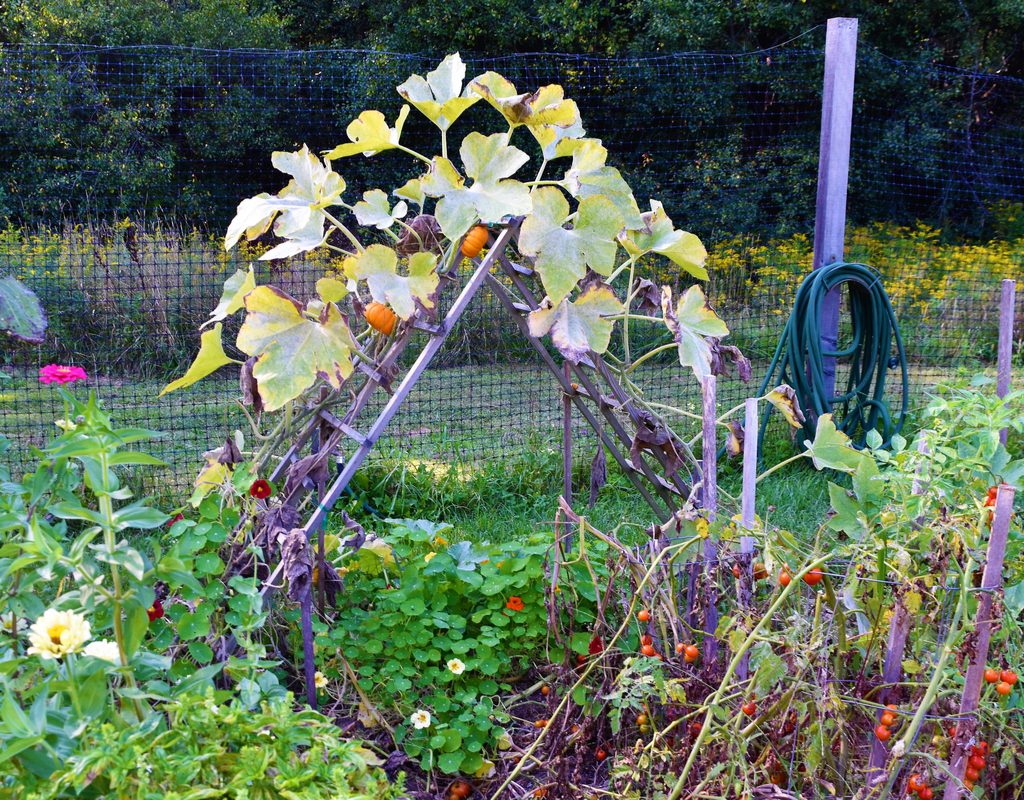
The basics of vertical gardening
Vertical gardening is the method of growing plants in a vertical or semi-vertical way, usually in a frame of some sort. You can grow plants as part of a green wall, where the frame of the garden is, as the name suggests, mounted to or embedded in a wall. Plants grow out of the frame sideways.
There are also freestanding trellises. These come in a variety of shapes and sizes, and you can actually make your own with relative ease. You can make a trellis out of a frame with a lattice or grid filling in the middle, and they can be any shape to fit with the aesthetic of your garden — but there are two standard shapes.
There is a standard vertical trellis, which is traditionally a vertical rectangular frame and lattice, often with a rectangular base to keep it standing up. You can mount these to a wall or place them right up against a house or other structure to form an easy green wall. Vertical trellises work well for flowers and small fruits or vegetables.
There are also A-frame trellises. These are, as you might expect, shaped a bit like the letter A. There are two rectangular frames with lattices leaned together and connected at the top to form a triangle. These are very stable and are also useful for flowers and smaller fruits and vegetables; they also offer a little more support for larger fruits and vegetables.
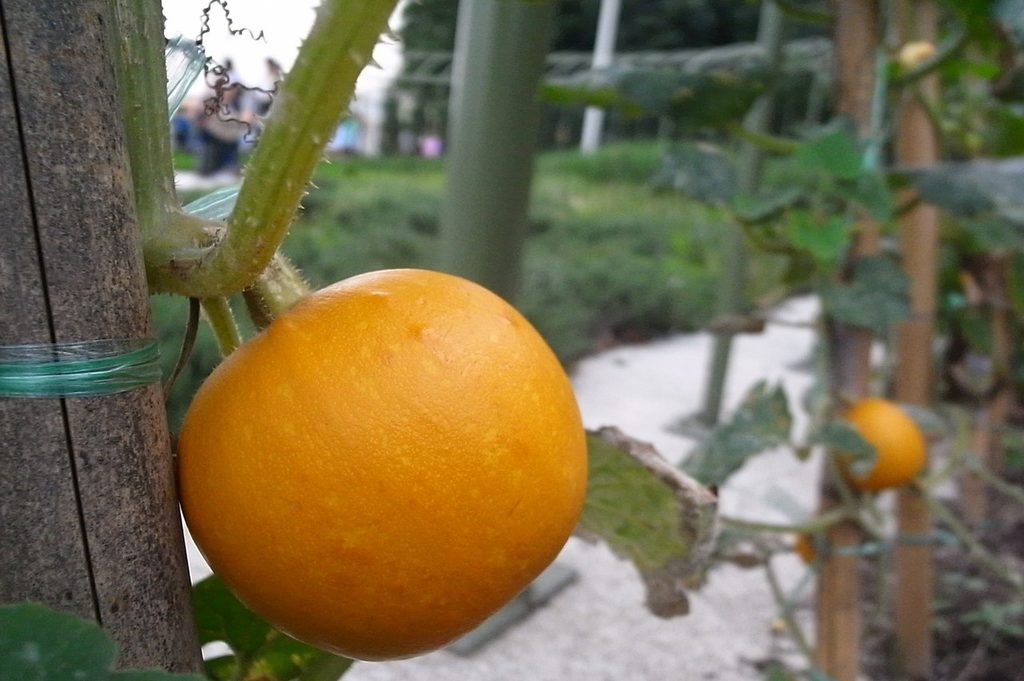
Do pumpkins grow well in vertical gardens?
You bet they do! Pumpkin vines love to climb; in fact, they’ll climb over anything near them if you aren’t careful. This makes them an excellent choice for vertical gardens.
The type of vertical garden you choose, however, should depend on the type of pumpkin you’re growing. Small pumpkin varieties, like Baby Boo or Hooligan, will do OK on any type of trellis. Larger pumpkins, however, may need a little more support. For medium or large pumpkins, pick an A-frame or similar style of trellis. If you plan on growing pumpkins that tend toward 5 pounds or more, they may need even more support. You can create a fabric sling to support them from beneath as they grow to avoid fallen pumpkins.
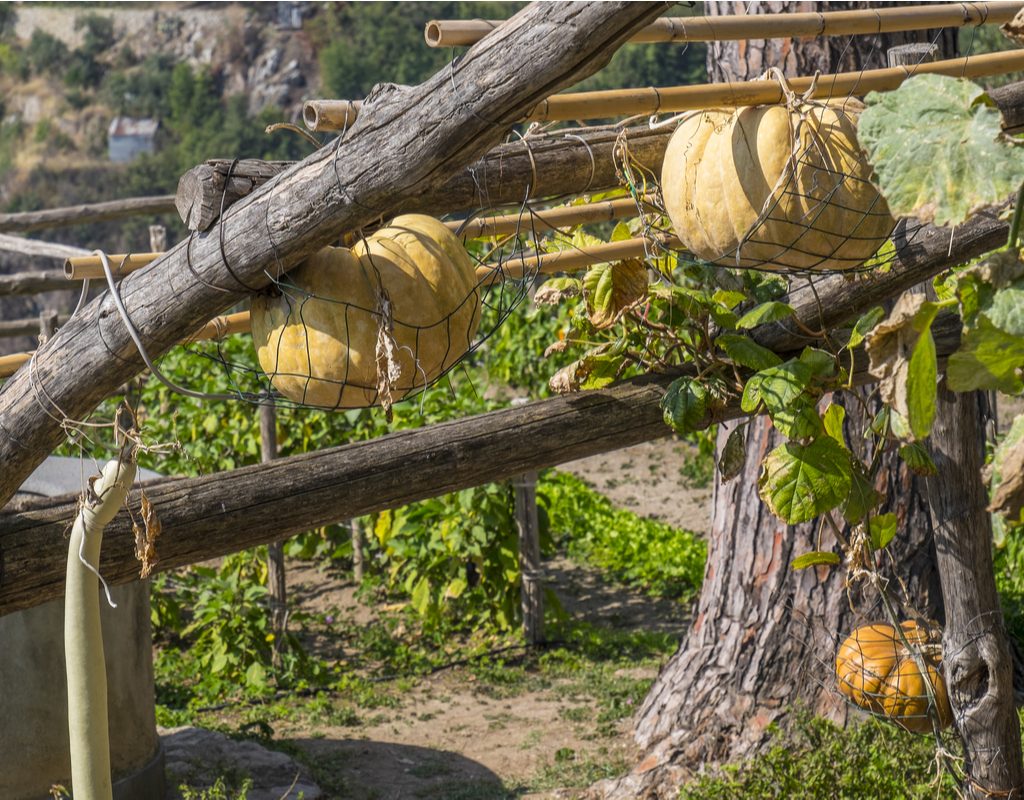
How do you grow pumpkins vertically?
First, select the type of pumpkin and trellis you want. You can build your own trellis, make use of an existing structure, or buy a pre-made trellis. Position your trellis where you want it, keeping in mind the amount of sun it gets and the type of soil it’s on. Since the pumpkins will be growing on it, the conditions need to fit with the preferences of the pumpkin variety you have.
Then, plant your pumpkins like you normally would at the base of the trellis. You can plant your pumpkins first and then arrange your trellis how you want to, if you prefer. Just be sure not to put the trellis directly over the seeds! Once the seeds have sprouted and you have vines that are a few inches long, gently weave the vines into the trellis.
You don’t need to wrap them tightly on to it; once they begin growing, they’ll hold on to it on their own. If the vines are too small and are slipping off the trellis, you can gently tie them to the trellis with some garden twine until they begin growing. They’ll continue climbing on their own. The only real difference in care is that they need more frequent watering, as the ground has less cover than it otherwise would.
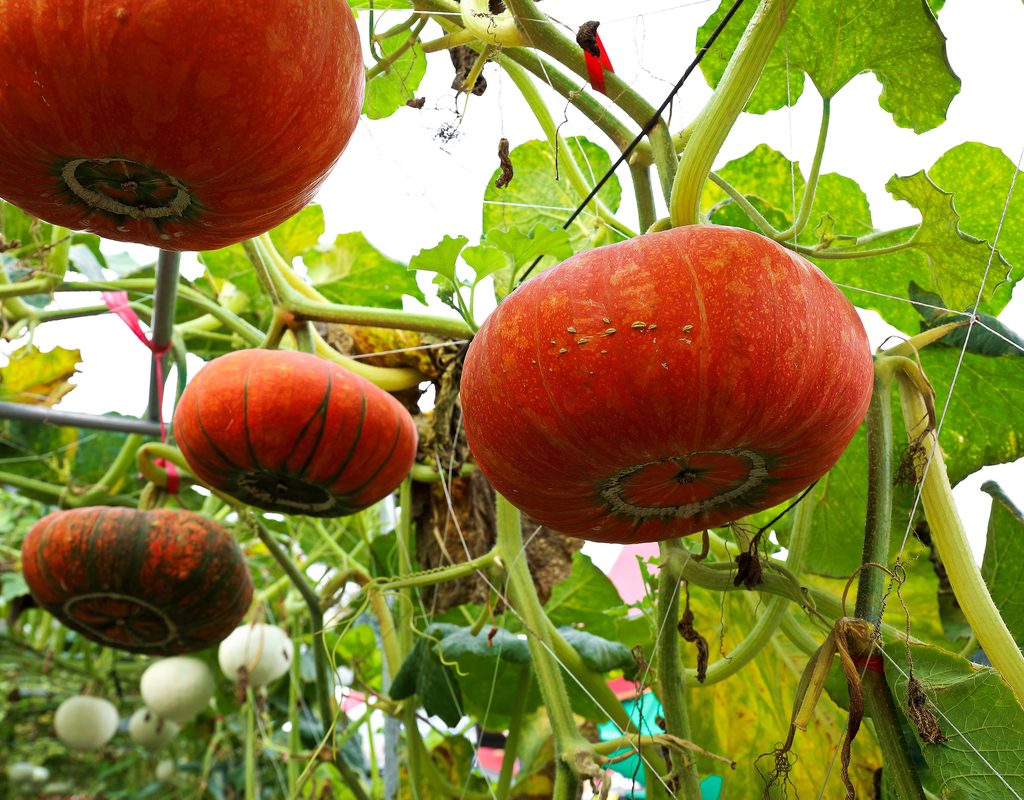
What are the pros and cons?
Vertical gardening leads to healthier fruits and vegetables as it keeps them away from ground-dwelling pests and decreases the likelihood of diseases. Vertical gardening also adds to the visual interest of your garden. Depending on how you arrange it, vertical gardens conserve space, too.
On the other hand, it can be harder to set up than a regular garden. Building your own trellis isn’t difficult, but it does require some supplies and time. If you opt to buy a pre-made trellis, that’s another expense to add to the budget. If you’re growing larger fruits or vegetables, the weight may become too heavy for the vine, leading to fruits or vegetables falling off, unripe, and shattering on the ground.
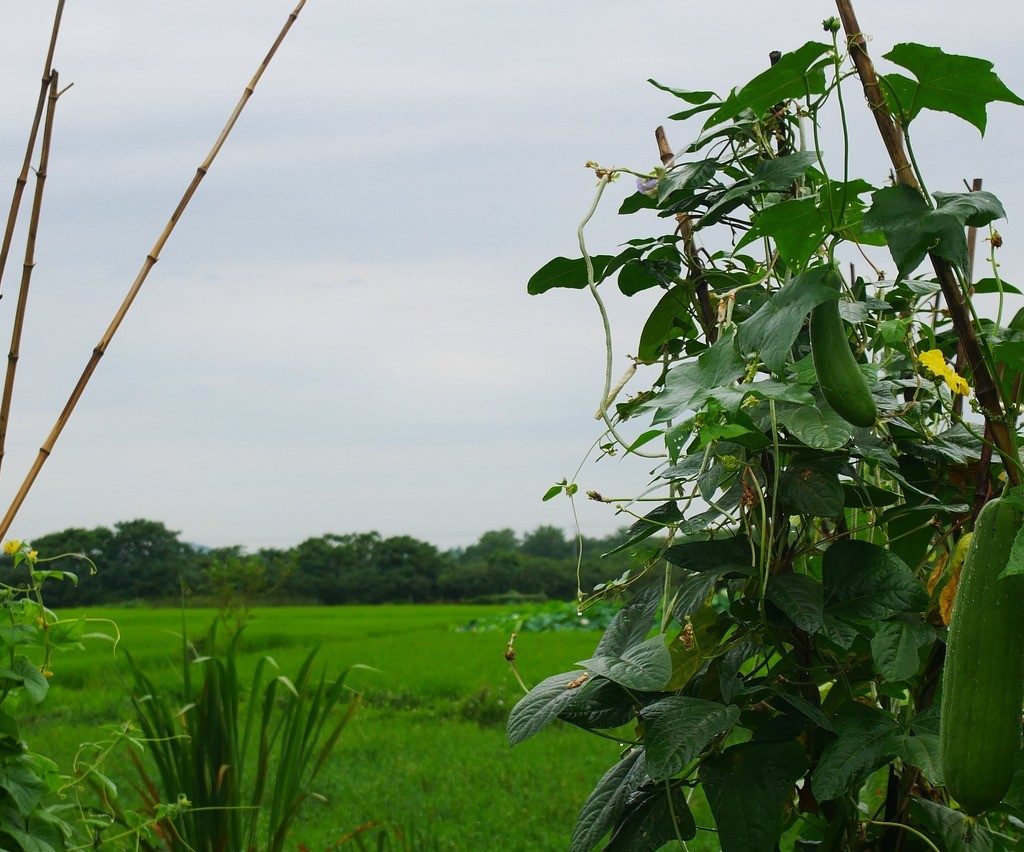
Companion planting with a trellis
There are a variety of plants that grow well alongside pumpkins, but you may be wondering how companion planting works with vertical gardening. The answer is surprisingly simple: plant the companion plants around the base of the trellis or grow them up the other side of it.
If you’re using a large A-frame or arch trellis, then you can train your pumpkins up one side and another vining plant up the other. This method works best with smaller pumpkins, as they will need less room to grow. Vegetables such as beans, cucumbers, small melons, or even another variety of pumpkin can grow in this way. Flowering vines can also be used as companion plants, as long as they can withstand the amount of sun that pumpkins need. If you aren’t sure if your trellis is large enough to accommodate more than just pumpkins, it’s a good idea to grow the pumpkins on their own for the first year.
Non-vining plants can grow around the base of your trellis, including underneath it. Herbs such as marjoram, lavender, chamomile, and chives are all good options, as are root and bulb vegetables like radishes and onions. Be sure to plant them far enough away from the base of your pumpkin plants to avoid crowding. Companion planting like this can also help prevent the soil from drying out too quickly, as the leaves of the other plants shade the ground.
No matter if you’re growing big, prize-winning pumpkins or tiny, adorably decorative pumpkins, now you know the secret (or maybe not so secret) way to grow the healthiest pumpkins. Why stop at pumpkins? You can grow anything that has vines on a trellis! Whether you’re growing beautiful flowers or delicious vegetables, don’t be afraid to employ a trellis.


